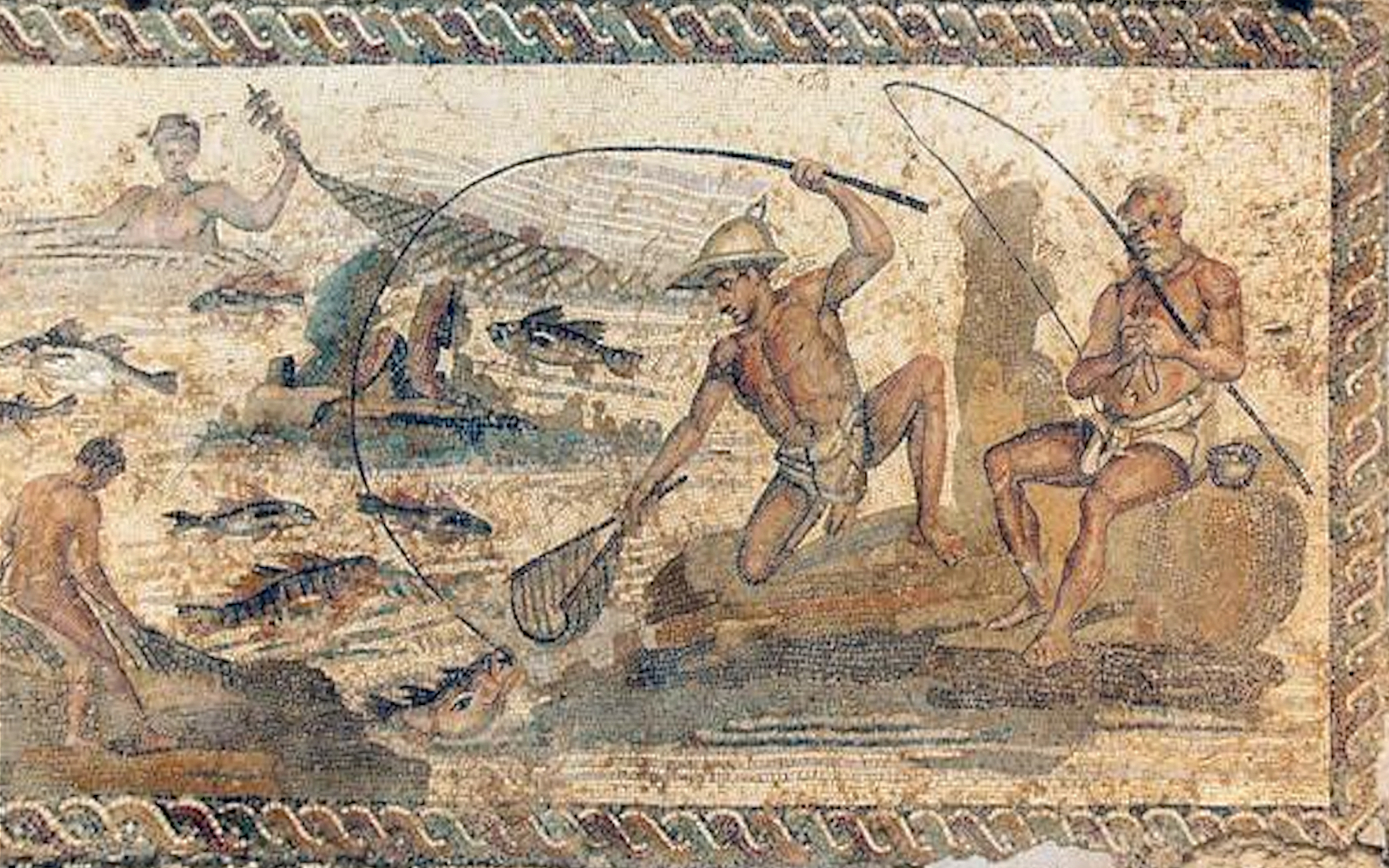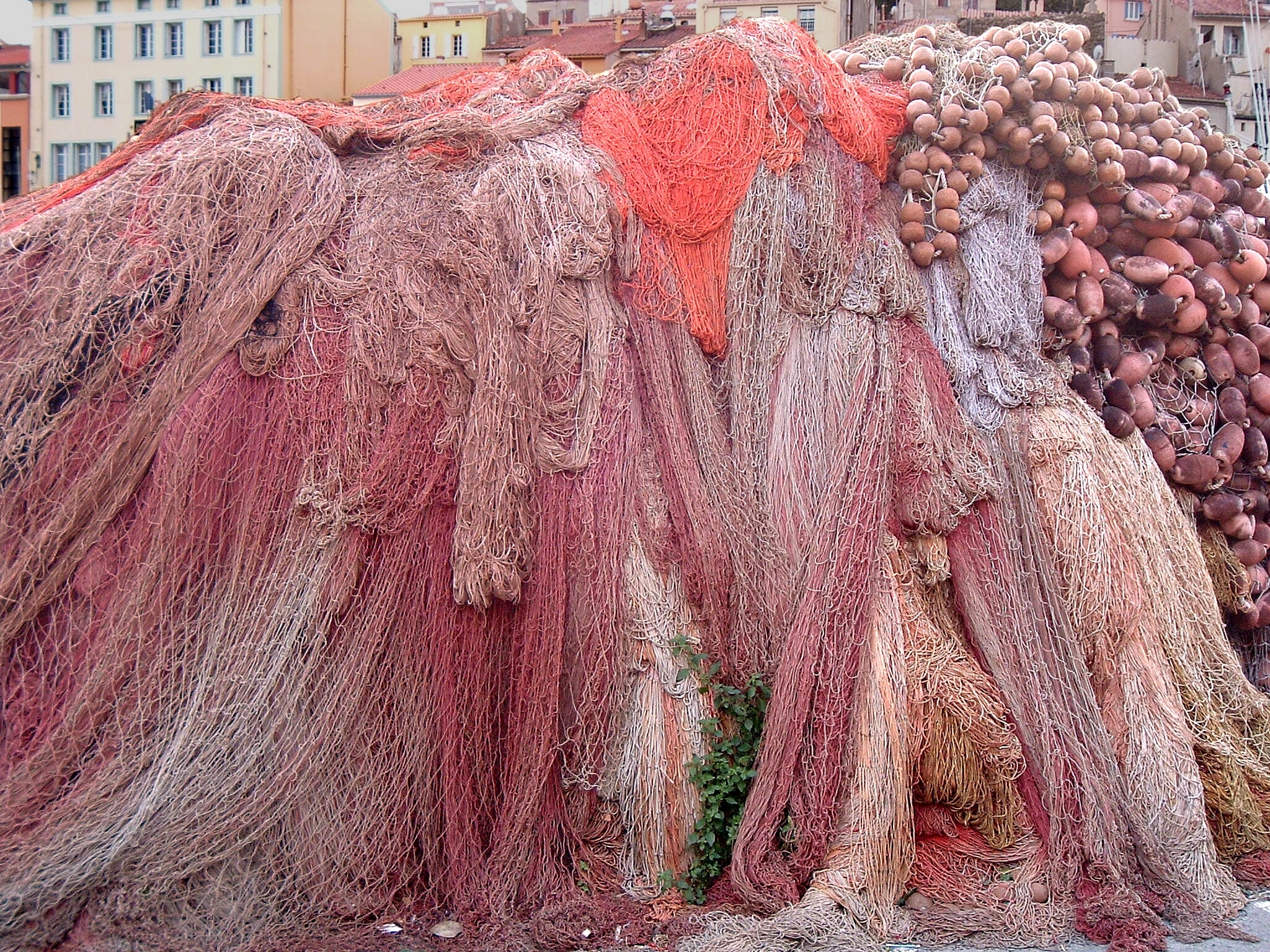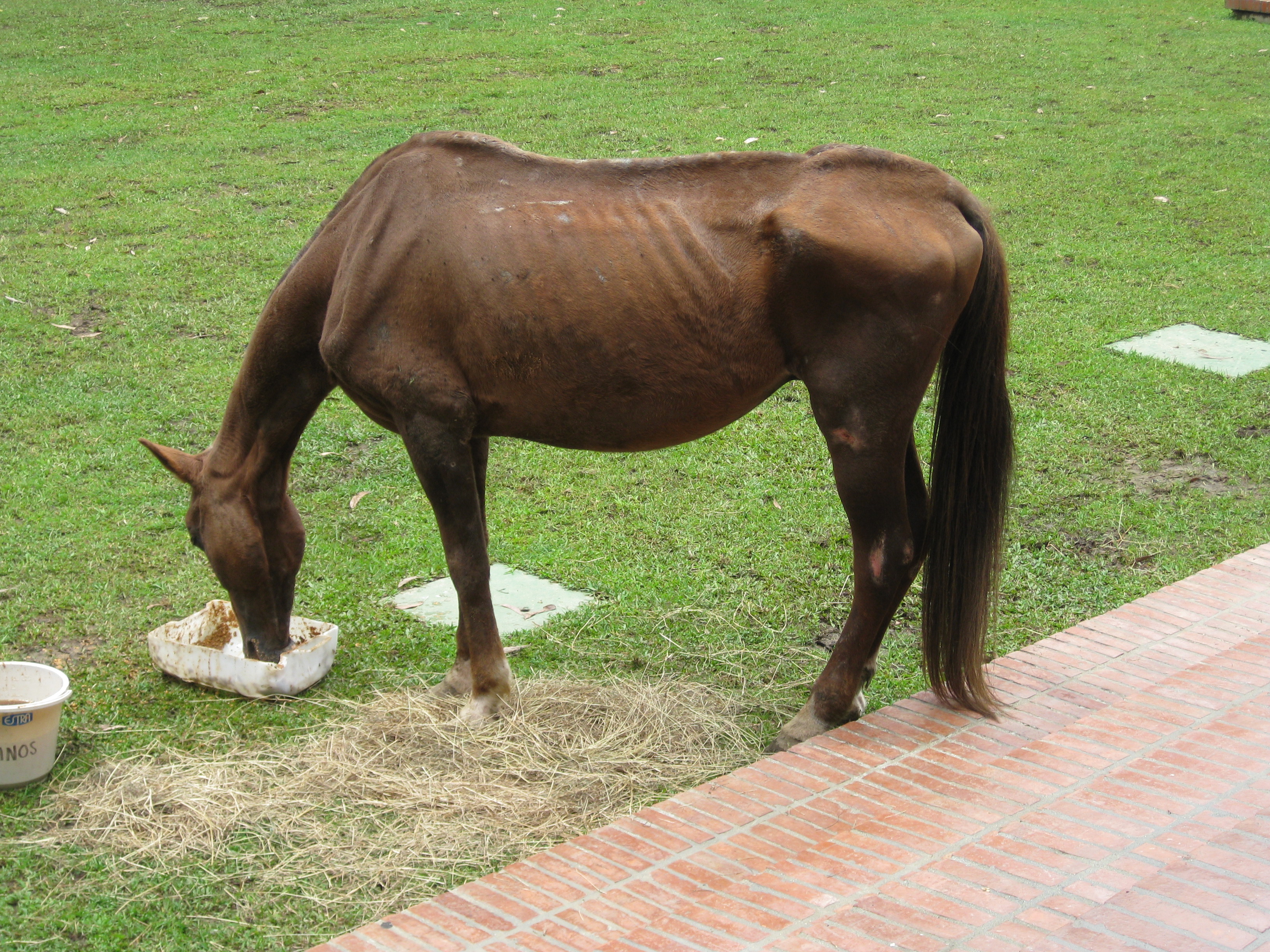|
Snagging
Snagging, also known as snag fishing, snatching, snatch fishing, jagging (Australia), or foul hooking, is a fishing technique for catching fish that uses sharp grappling hooks tethered to a fishing line to externally pierce (i.e. "snag") into the flesh of nearby fish, without needing the fish to swallow any hook with its mouth like in angling. This is achieved by suddenly and vigorously pulling the line (either by handlining or with a rod) when movement is felt, causing the snag hook to "claw" into any fish unfortunate enough to be grappled by the hook points. Weighted multi-hook rigs can be used to increase chances of success, and modern technologies such as underwater video camera can also be used to visually aid and time the snagging. Some herbivorous/ algaevorous fish species, such as paddlefish, are not attracted to normal angling baits or lures as they primarily filter-feed on plankton. While these fish can be caught using nets, spears or pole hooks, snagging is also u ... [...More Info...] [...Related Items...] OR: [Wikipedia] [Google] [Baidu] |
Fishing Technique
Fishing techniques are methods for catching fish. The term may also be applied to methods for catching other aquatic animals such as molluscs (shellfish, squid, octopus) and edible marine invertebrates. Fishing techniques include hand-gathering, spearfishing, netting, angling and trapping. Recreational, commercial and artisanal fishers use different techniques, and also, sometimes, the same techniques. Recreational fishers fish for pleasure or sport, while commercial fishers fish for profit. Artisanal fishers use traditional, low-tech methods, for survival in developing countries, and as a cultural heritage in other countries. Mostly, recreational fishers use angling methods and commercial fishers use netting methods. There is an intricate link between various fishing techniques and knowledge about the fish and their behaviour including migration, foraging and habitat. The effective use of fishing techniques often depends on this additional knowledge. Which techniques are ... [...More Info...] [...Related Items...] OR: [Wikipedia] [Google] [Baidu] |
Fishing Line
A fishing line is a flexible, high-tensile cord used in angling to tether and pull in fish, in conjunction with at least one hook. Fishing lines are usually pulled by and stored in a reel, but can also be retrieved by hand, with a fixed attachment to the end of a rod, or via a motor. Fishing lines generally resemble a long, ultra-thin rope, with important attributes including length, material, weight and thickness. Other factors relevant to certain fishing environments include breaking strength, knot strength, UV resistance, castability, limpness, stretch, abrasion resistance, and visibility. Traditional fishing lines are made of silk, while most modern lines are made from synthetic polymers such as nylon, polyethylene or polyvinylidene fluoride ("fluorocarbon") and may come in monofilament or braided ( multifilament) forms. Terminology Fishing with a hook-and-line setup is called angling. Fish are caught when one are drawn by the bait/ lure dressed on the hook int ... [...More Info...] [...Related Items...] OR: [Wikipedia] [Google] [Baidu] |
Angling
Angling is a fishing technique that uses a fish hook or "angle" (from Old English ''angol'') attached to a fishing line to tether individual fish in the mouth. The fishing line is usually manipulated via a fishing rod, although rodless techniques such as handlining and longlining also exist. Modern angling rods are usually fitted with a reel that functions as a cranking device for storing, retrieving and releasing out the line, although Tenkara fishing and cane pole fishing are two rod-angling methods that do not use any reel. The hook itself can be additionally weighted with a dense tackle called a sinker, and is typically dressed with an appetizing bait to attract the fish and enticing it into swallowing the hook, but sometimes an inedible fake bait with multiple attached hooks (known as a lure) is used instead of a single hook with edible bait. A bite indicator, such as a float or a quiver tip, is often used to relay underwater status of the hook to the surface. ... [...More Info...] [...Related Items...] OR: [Wikipedia] [Google] [Baidu] |
Fishing Gaff
In fishing, a gaff is a handheld pole with a sharp hook or sideway spike on the distal end, which is used to swing and stab into the body of a large fish like a pickaxe, and then pull the fish out of the water like using a pike pole. Ideally, the tip of the hook/spike is placed under the fish's backbone. Gaffs are used when the weight of the target fish exceeds the breaking strength of the fishing line or the fishing rod and thus typical angling retrieval would be problematic. A gaff cannot be used if it is intended to release the fish unharmed after capture, unless the fish is skillfully gaffed right in the lip, jaw or lower gill using a thin hook. A "flying gaff" is a specialized type of gaff used for securing and controlling very large fish. The hook part of the gaff (the head) detaches when sufficient force is used, somewhat like a harpoon's dart. The head is secured to the boat with a length of heavy rope or cable. See also * Spearfishing Spearfishing is a ... [...More Info...] [...Related Items...] OR: [Wikipedia] [Google] [Baidu] |
Colorado Division Of Wildlife
Colorado Parks and Wildlife manages the state parks system and the wildlife of the U.S. state of Colorado. , the division managed the 42 state parks and 307 wildlife areas of Colorado. , the Colorado Natural Areas Program had 93 designated sites which protected more than 250 endangered, rare, or threatened species. History *1937 – The state legislature appointed a land board to create the first State Parks Board. *1951 – The State Parks Board leased Cherry Creek recreation area from the Army Corps of Engineers. *1963 – State Parks was merged with the Division of Wildlife. *1971 – The State Recreational Trails Program was created. *1972 – State Parks and the Division of Wildlife were separated. *1977 – State Parks was requested to manage the snowmobile program for the state. *1984 – State Parks became responsible for licensing river outfitters. *1990 – State parks began managing the off-highway vehicle program. *1992 - Voters approved the Great Outdoors Colo ... [...More Info...] [...Related Items...] OR: [Wikipedia] [Google] [Baidu] |
California Department Of Fish And Game
The California Department of Fish and Wildlife (CDFW), formerly known as the California Department of Fish and Game (CDFG), is a state agency under the California Natural Resources Agency. The Department of Fish and Wildlife manages and protects the state's wildlife, wildflowers, trees, mushrooms, algae (kelp) and native habitats (ecosystems). The department is responsible for regulatory enforcement and management of related recreational, commercial, scientific, and educational uses. The department also prevents illegal poaching. History The Game Act was passed in 1852 by the California State Legislature and signed into law by Governor John Bigler. The Game Act closed seasons in 12 counties for quail, partridge, mallard and wood ducks, elk, deer, and antelope. A second legislative action enacted the same year protected salmon runs. In 1854, the Legislature extended the act to include all counties of California. In 1860, protection controls were extended for trout. Lake Merrit ... [...More Info...] [...Related Items...] OR: [Wikipedia] [Google] [Baidu] |
Arkansas Game & Fish Commission
Arkansas Game and Fish Commission (AGFC) is a state agency of Arkansas, headquartered in Little Rock, Arkansas. Steve N. Wilson of Norfork, Arkansas joined the agency in 1968 and became its director in 1979. He resigned in 2000 and died in 2021. In 2016, Jeff Crow took director position of the Arkansas Game and Fish Commission. Bryan Hendricks of the ''Arkansas Democrat-Gazette The ''Arkansas Democrat-Gazette'' is the newspaper of record in the U.S. state of Arkansas, printed in Little Rock with a northwest edition published in Lowell. It is distributed for sale in all 75 of Arkansas' counties. By virtue of one of ...'' that Wilson "molded the Arkansas Game and Fish Commission into the organization it is today". In Arkansas, outdoor recreation produces more than 4.9 million dollars a day. In 2020 the agency passed additional rules regarding fishing, both for pleasure and for commercial operations. References Further reading Comparing Appropriations and Operationsfor the ... [...More Info...] [...Related Items...] OR: [Wikipedia] [Google] [Baidu] |
Arizona Game And Fish Department
The Arizona Game and Fish Department is a state agency of Arizona, headquartered in Phoenix. The agency is tasked with conserving, enhancing, and restoring Arizona's diverse wildlife resources and habitats through protection and management programs. Operations The Arizona Game and Fish Department is funded primarily by revenues generated through the sale of hunting and fishing licenses, tags, and stamps, as well as the discretionary purchases of hunters and anglers; it does not receive tax funding through the Arizona State General Fund. Wildlife conservation The Arizona Game and Fish Department has developed a "Comprehensive Wildlife Conservation Strategy" (CWCS)—a 10-year vision for managing Arizona’s fish, wildlife and natural habitats, input and partnerships with various agency cooperators, sportsman and recreational groups, conservation organizations, special interest groups, Native American tribes, county and municipal governments, and the general public. Watchable wi ... [...More Info...] [...Related Items...] OR: [Wikipedia] [Google] [Baidu] |
Fishing Net
A fishing net is a Net (device), net used for fishing. Nets are devices made from fibers woven in a grid-like structure. Some fishing nets are also called fish traps, for example #Fyke nets, fyke nets. Fishing nets are usually meshes formed by knotting a relatively thin thread. Early nets were woven from grasses, flaxes and other fibrous plant material. Later cotton was used. Modern nets are usually made of artificial polyamides like nylon, although nets of organic polyamides such as wool or silk thread were common until recently and are still used. History Fishing nets have been used widely in the past, including by stone age societies. The oldest known fishing net is the net of Antrea, found with other fishing equipment in the Karelian town of Antrea, Grand Duchy of Finland, Finland, in 1913. The net was made from willow, and dates back to 8300 BC. Recently, fishing net sinkers from 27,000 BC were discovered in Korea, making them the oldest fishing implements discovered, ... [...More Info...] [...Related Items...] OR: [Wikipedia] [Google] [Baidu] |
Alabama Department Of Conservation And Natural Resources
The Alabama Department of Conservation and Natural Resources (ADCNR) is the state agency responsible for the conservation and management of Alabama's natural resources including state parks, state lands, wildlife and aquatic resources. ADCNR also issues hunting and fishing licenses for the state. The department promotes wise stewardship and enjoyment of the state's natural resources through five divisions: Marine Resources, State Lands, State Parks and Wildlife and Freshwater Fisheries. Supporting those divisions are seven support sections: Accounting, Diversity and Recruiting, Engineering, Information and Education, Information Technology, Legal, and Personnel and Payroll. The department is led by a commissioner who is appointed by the governor, and advised by the ten-member Conservation Advisory Board. Advisory board members are appointed by the governor for terms of six years. The governor, Agriculture and Industries Commissioner, and Alabama Cooperative Extension System Directo ... [...More Info...] [...Related Items...] OR: [Wikipedia] [Google] [Baidu] |
Animal Cruelty
Cruelty to animals, also called animal abuse, animal neglect or animal cruelty, is the infliction by omission (neglect) or by commission by humans of suffering or harm upon non-human animals. More narrowly, it can be the causing of harm or suffering for specific achievements, such as killing animals for entertainment; cruelty to animals sometimes encompasses inflicting harm or suffering as an end in itself, referred to as zoosadism. Divergent approaches to laws concerning animal cruelty occur in different jurisdictions throughout the world. For example, some laws govern methods of killing animals for food, clothing, or other products, and other laws concern the keeping of animals for entertainment, education, research, or pets. There are several conceptual approaches to the issue of cruelty to animals. Even though some practices, like animal fighting, are widely acknowledged as cruel, not all people and nations have the same definition of what constitutes animal cruelty. Ma ... [...More Info...] [...Related Items...] OR: [Wikipedia] [Google] [Baidu] |
.jpg)



